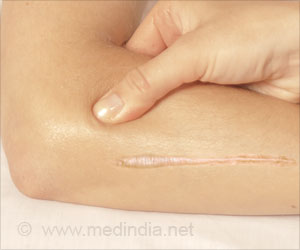Scientists have found that a simpler tool was as effective as the complex one in a comparison between two diagnostic methods used to detect deep vein thrombosis (DVT).
Scientists have found that a simpler tool was as effective as the complex one in a comparison between two diagnostic methods used to detect deep vein thrombosis (DVT).
One of the most accurate methods for the detection of DVT is an imaging technique, called compression ultrasonography, which has now replaced other diagnostic methods in common practice.Two widely used ultrasonography diagnostic methods are point and whole-leg.
In 2-point ultrasonography, compression is applied to two veins, which may lead to benefits like simplicity, reproducibility and broad availability (may be performed with virtually all ultrasound scanners, irrespective of age or model).
"Its major limitation is the need to repeat the test once within 1 week in patients with normal findings at presentation to detect calf DVT extending to the proximal [near the point of origin] veins. Repeat testing may be safely avoided in patients with a normal D-dimer test [blood test used to help rule out active blood clot formation] at presentation," wrote the authors.
In case of whole-leg ultrasonography, the advantages include the ability to exclude isolated calf DVT, allowing for 1-day treatment of all patients, without additional testing.
On the flip side, it needs top-quality ultrasound equipment and experienced operators; therefore, it is often unobtainable after hours and during the weekends.
Advertisement
Led by Enrico Bernardi, M.D., Ph.D., of the Civic Hospital, Conegliano, Italy, the researchers conducted a study to find out if the two diagnostic strategies are equivalent for the treatment of patients with suspected DVT of the lower extremities.
Advertisement
The researchers found that the incidence of confirmed symptomatic venous thromboembolism (VTE; blood clots in the deep veins of the legs or in the lungs) of patients in the 2-point strategy group during the 3-month follow-up period, was 0.9 percent (7 of 801 patients).
In case of patients randomized to the whole-leg ultrasonography method, the incidence of confirmed symptomatic VTE during the follow-up period was 1.2 percent (9 of 763 patients).
"The observed difference between the 2 groups in terms of symptomatic VTE at the end of the 3-month follow-up period was 0.3 percent, which is within the chosen equivalence limit" wrote the authors.
They added: "Either strategy may be chosen based on the clinical context, on the patients' needs, and on the available resources. [Two-point ultrasonography plus D-dimer] is simple, convenient, and widely available but requires repeat testing in one-fourth of the patients. [Whole-leg ultrasonography] offers a 1-day answer, desirable for patients with severe calf complaints, for travelers, and for those living far from the diagnostic service, but is cumbersome, possibly more expensive, and may expose patients to the risk of (unnecessary) anticoagulation."
The study is published in the latest issue of JAMA.
Source-ANI
RAS/SK







